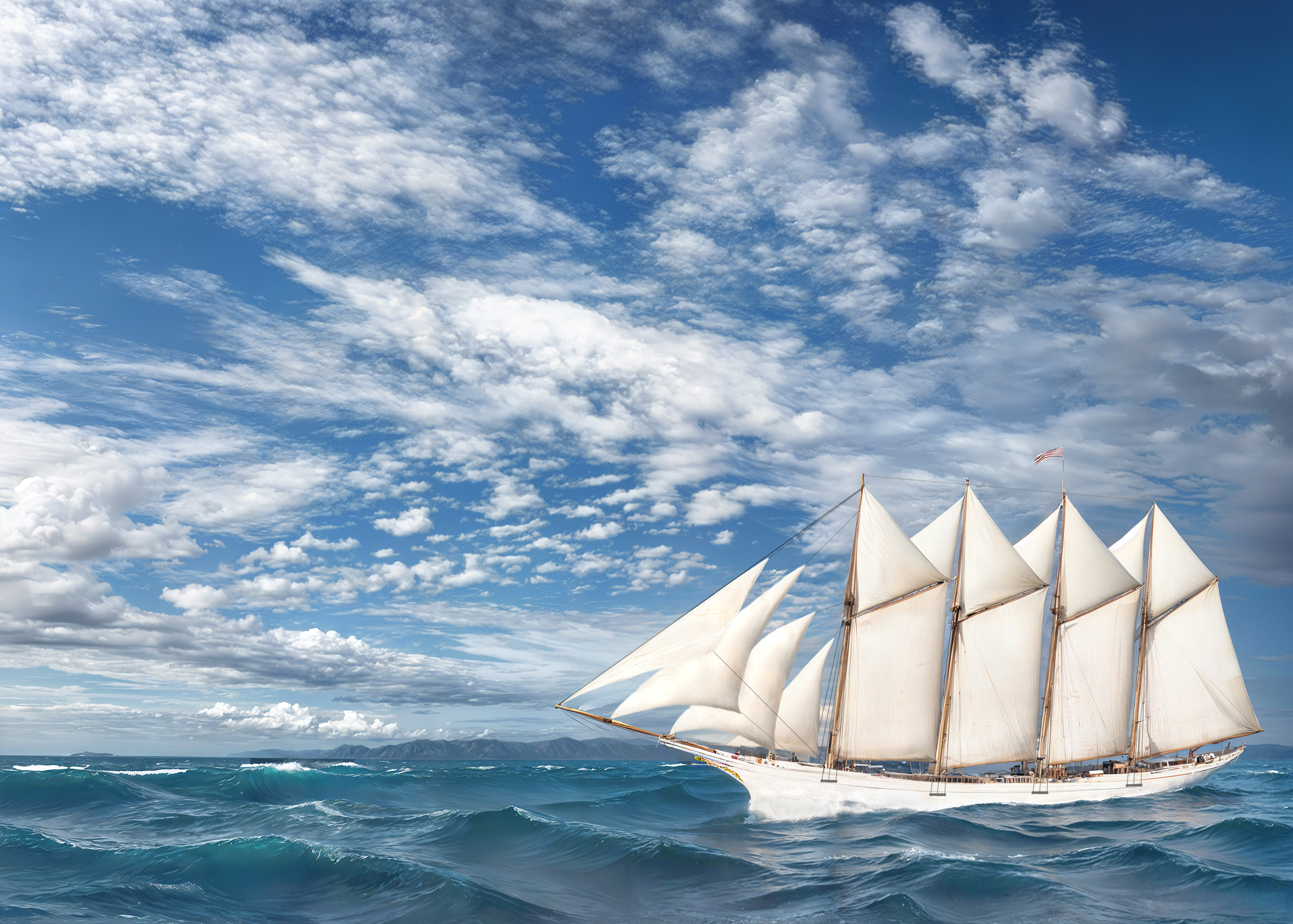Dirigo
Dirigo, the Latin word meaning “I direct” or “I lead,” serves as both the motto of the state of Maine and a fitting name for a vessel of significance in American maritime history. The steel sailing ship Dirigo, constructed in 1894 by Arthur Sewall & Co. of Bath, Maine, marked a pivotal moment in the evolution of shipbuilding in the United States: she was the first steel-hulled sailing vessel built in the nation, a bold departure from the centuries-long tradition of timbered construction that had shaped both the physical and cultural identity of American seafaring. The Sewall shipyard was the most successful shipbuilding firm in Bath for several decades, building more than one hundred merchant ships, mostly deepwater square-riggers and the only American yard of its time to pivot successfully from wooden sailing vessels to steel. Measuring 3,005 gross tons and extending 312 feet in registered length, she belonged to the last great generation of deepwater square-riggers. In 1912, Dirigo undertook a remarkable voyage: a 14,000-mile passage from Baltimore to Seattle, carrying 4,576 tons of coal, with the American writer Jack London aboard, accompanied by his wife, Charmian London, and their Japanese servant. What renders this episode especially curious is the mingling of labor and literature: London, a man who had long romanticized the sea, shipped as mate, while Charmian served as stewardess, a gesture as much performative as practical. The image of London climbing ratlines and scrubbing decks while also carrying typewriters and a trunk full of paper for his craft—seeking to change physical toil into literary capital—captures the tension at the heart of his work: between action and narration, immediacy and recollection. From this voyage, London drew the imaginative material for his 1914 novel The Mutiny of the Elsinore, a work haunted by the specter of disintegration: of authority, of social order, and of the very maritime culture that had sustained so many of his earlier narratives. The voyage of the Dirigo thus becomes not merely an historical footnote but a pivotal inflection point in the symbolic economy of early twentieth-century American letters. After Sewall sold the Dirigo to San Francisco owners in 1915 her fate was sealed by the geopolitical upheavals of the First World War. In 1917, she was sunk off the Irish coast by a German submarine, her destruction an instance of the broader annihilation of the world of commercial sail by the relentless forces of modern mechanized increase. The Dirigo was a vessel navigating between the age of sail and the age of iron, between the realm of mythic seafaring and the sober, often brutal realities of increase.









